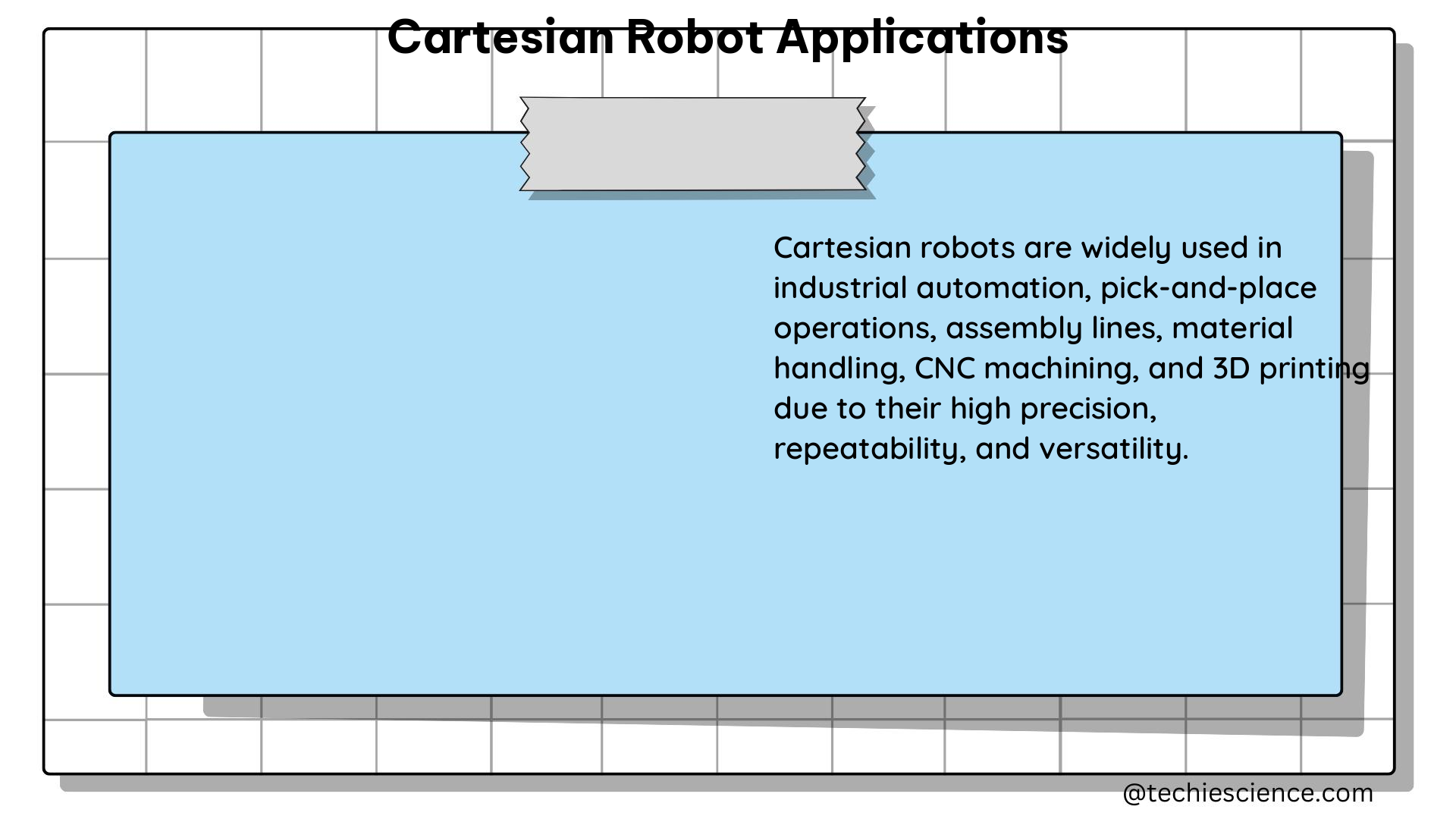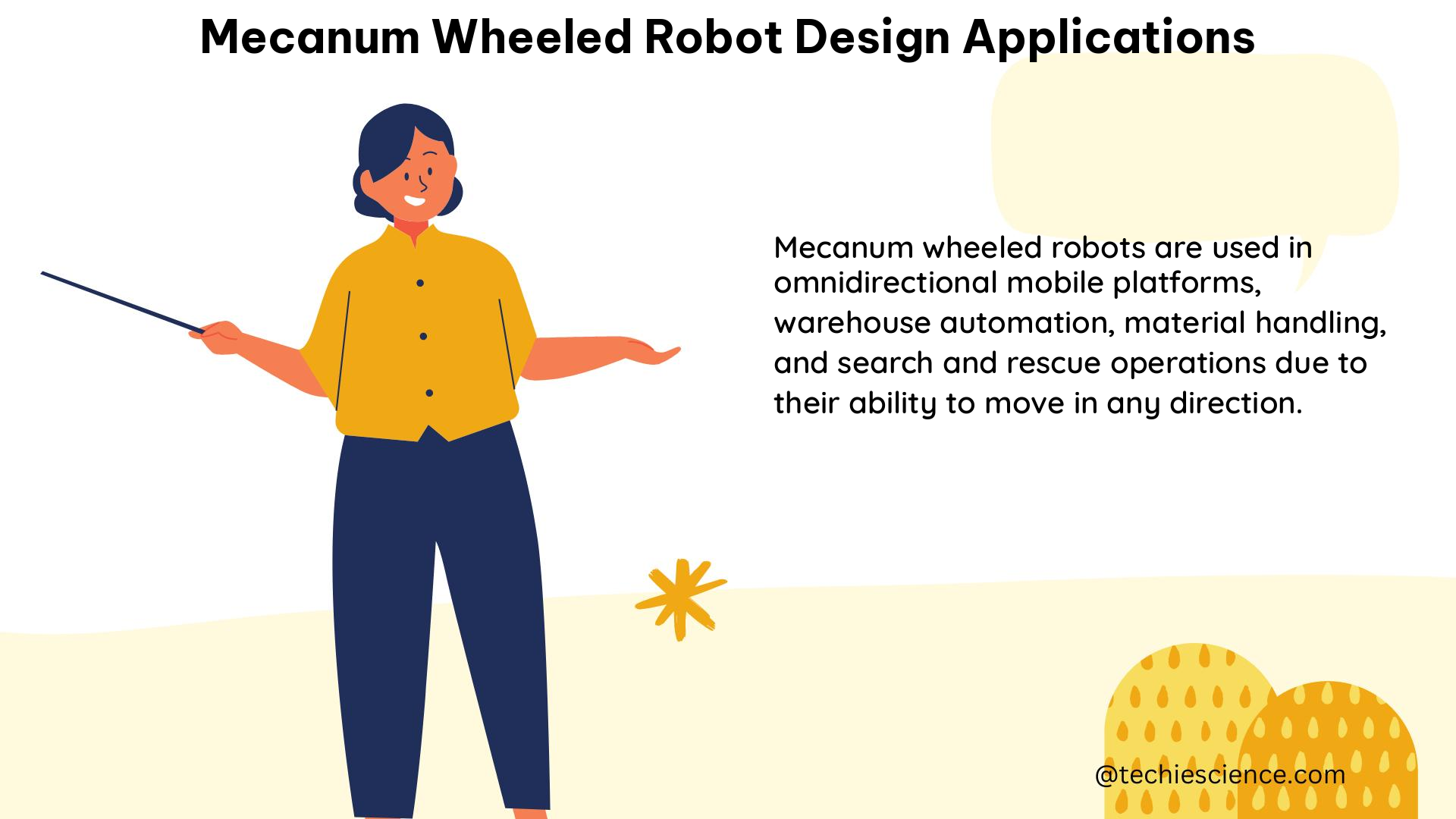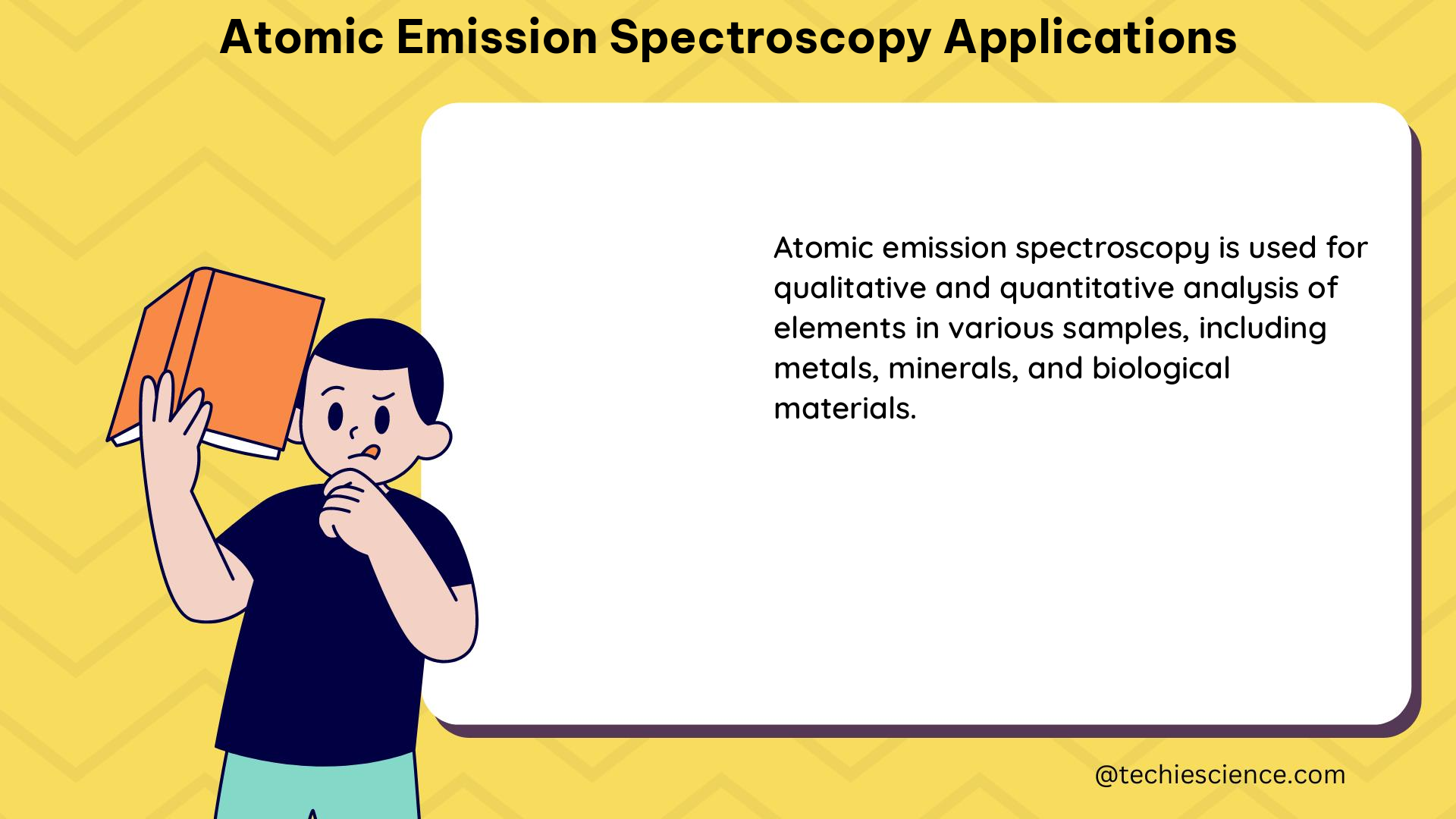Cartesian robots, also known as linear robots or gantry robots, are industrial robots that move in a linear motion along three perpendicular axes (X, Y, and Z). They are widely used in various applications due to their high precision, speed, and flexibility. This comprehensive guide will delve into the technical details and specific applications of Cartesian robots, providing a valuable resource for science students and professionals.
Part Pick & Place
Cartesian robots excel in part pick and place operations, offering impressive performance metrics. These robots can achieve a high speed of up to 5 m/s and a high acceleration of up to 10 m/s^2. They can handle parts with a weight of up to 50 kg and a size of up to 1 m x 1 m. The repeatability of the robot can be as low as ±0.02 mm, ensuring precise and consistent placement of parts.
The high speed and acceleration of Cartesian robots are achieved through the use of linear motors, which provide direct drive without the need for gearboxes or belts. This design eliminates backlash and wear, resulting in improved positioning accuracy and repeatability. The lightweight and rigid structure of Cartesian robots also contribute to their high-speed capabilities.
To handle heavy and large parts, Cartesian robots utilize a counterbalance mechanism, which can support payloads up to 500 kg. This mechanism uses a combination of springs, air cylinders, or linear motors to counteract the weight of the payload, reducing the load on the robot’s motors and structure.
Process-to-Process Transfer

Cartesian robots are well-suited for transferring heavy and large workpieces between different processes. They can handle workpieces with a weight of up to 500 kg and a size of up to 3 m x 2 m. These robots can achieve a high accuracy of ±0.1 mm, ensuring precise positioning of the workpieces.
To further improve the efficiency of process-to-process transfer, Cartesian robots can be equipped with dual-drive control. This feature allows the robot to control the X and Y axes independently, reducing the cycle time by up to 50%. The dual-drive control system uses two separate motors for the X and Y axes, providing faster and more precise movements.
The high accuracy of Cartesian robots in process-to-process transfer is achieved through the use of linear encoders and advanced control algorithms. Linear encoders provide direct feedback on the position of the robot’s axes, allowing for precise positioning and compensation of any errors or deviations.
Part Assembly System
Cartesian robots can be utilized in part assembly systems, where they can assemble two types of parts alternately at a high efficiency. These robots can achieve a cycle time of less than 1 second, making them ideal for high-speed assembly applications.
To save space and further reduce the cycle time, Cartesian robots can be equipped with dual-arm specifications. This configuration allows the robot to perform two assembly tasks simultaneously, one with each arm, effectively doubling the production rate.
The high-speed and precision of Cartesian robots in part assembly systems are achieved through the use of advanced control algorithms and high-performance servo motors. These control systems can precisely coordinate the movements of the robot’s axes, ensuring smooth and efficient part assembly.
Insertion Unit
Cartesian robots can be used as insertion units, where they can insert heavy workpieces into pallets or processing machines. These robots can handle workpieces with a weight of up to 100 kg and a size of up to 500 mm x 500 mm.
To cancel the tare weight of the workpiece, Cartesian robots can be equipped with a moving Z-axis and an air balancer. The moving Z-axis allows the robot to adjust the height of the workpiece, while the air balancer counteracts the weight of the workpiece, reducing the load on the robot’s motors and structure.
The high accuracy and repeatability of Cartesian robots in insertion applications are achieved through the use of linear encoders and advanced control algorithms. These control systems can precisely control the position and orientation of the workpiece, ensuring consistent and reliable insertion.
Assembler & Tester Base Machine
Cartesian robots can be used as the base machine for assembler and tester applications, where they can control two robots simultaneously at the upper and lower levels. These robots can maintain a levelness of ±0.1 mm, ensuring precise and consistent positioning of the workpieces.
In assembler applications, Cartesian robots can perform a variety of tasks, such as precision spot welding, caulking parts, and screw tightening. They can also be used for testing applications, where they can perform various measurements and inspections on the assembled products.
The ability of Cartesian robots to control two robots simultaneously is achieved through the use of advanced control systems and communication protocols. These control systems can coordinate the movements of the two robots, ensuring that they work in harmony and maintain the required levelness.
Other Applications
In addition to the applications mentioned above, Cartesian robots can also be used for a variety of other tasks, including:
- Dispensing: Cartesian robots can be used for precise dispensing of materials, such as adhesives, sealants, or coatings, with high repeatability and accuracy.
- Sealing: Cartesian robots can be used for sealing applications, where they can apply sealants or gaskets to various components with high precision and consistency.
- Conveyor: Cartesian robots can be integrated with conveyor systems, where they can perform tasks such as loading, unloading, or sorting of parts.
- Tester: Cartesian robots can be used as the base machine for testing applications, where they can perform various measurements and inspections on products.
These applications can be further customized to meet the specific requirements of the customer, such as the stroke length, payload, repeatability, communication method, and mechanism combination.
Technical Specifications
Here are some of the key technical specifications of Cartesian robots:
| Specification | Range |
|---|---|
| Stroke length | Up to 3 m x 2 m x 1 m (X x Y x Z) |
| Payload | Up to 500 kg |
| Repeatability | ±0.02 mm to ±0.1 mm |
| Communication method | RS-232C, Ethernet, field buses such as CC-Link |
| Control method | PLC, robot controller, or PC-based control |
| Mechanism combination | SCARA, 6-axis, or customized |
| Environment | Clean room, vacuum, or explosion-proof |
These specifications can be further customized to meet the specific requirements of the application, ensuring that the Cartesian robot is optimized for the task at hand.
Conclusion
Cartesian robots are versatile and highly capable industrial robots that find applications in a wide range of industries, from manufacturing to assembly and testing. This comprehensive guide has provided a detailed overview of the various applications and technical specifications of Cartesian robots, equipping science students and professionals with the knowledge to effectively utilize these powerful machines.
By understanding the capabilities and limitations of Cartesian robots, users can make informed decisions on the best-suited robot for their specific application, ultimately improving productivity, efficiency, and quality in their operations.

